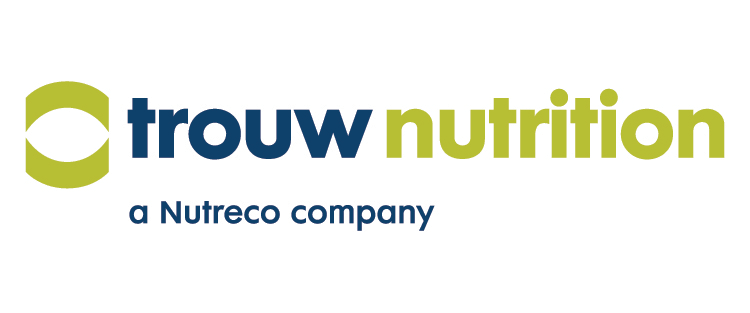
Dr. Arun C. Mazumder, Dr. Venket M. Shelke and Dr. Partha P. Das,Kemin Industries South Asia Pvt. Ltd.
Introduction
Demand for grains competing with human food for animal feed is increasing day by day, and maize is mostly preferred in many feed industries. Almost 55-60% of poultry feed is maize due to its price, nutritive value, and relatively less anti-nutritional factors. Like other parts of the world, demand for maize increases in Bangladesh.
The annual maize demand for the feed industry is 4.5 MMT, of which local production touches three-fourth of the requirements. During the early growth of the poultry industry, maize was imported from different countries like the USA, Argentina, Brazil, and India; presently decreasing the import dependence. In Bangladesh, maize cultivation in the winter season is called Rabi, but Kharif- the summer season gets popular and the annual production curve is increasing straightaway. Although maize production is increased, still it doesn’t fulfill the demand of the feed industry. Now, the feed industry has come out with an annual plan based on local maize production, and the rest was imported. Because of high demand, nutritive value, and price, feed producers are opting for local maize and started using newly harvested maize. Similar to other cereal grains, maize is a post-harvest ripen crop, and it requires some time for maturity that takes place at the time of storage. During this post-harvest time, some important changes are transpired which is crucial for the feed industry and food animals.
Challenges of using Newly Harvested Maize
Due to the insufficient supply, the demand for maize in the feed industry is increasing that massive amount of newly harvested maize is incorporated in poultry feed. Producers having mechanical drier facilities dry the maize before the use in poultry feed and storage, while some purchase sun-dried maize from farmers based on moisture percentage and usage in the feed. Usage of newly harvested maize stored at less than two months showed problems of low feed intake, indigestion, decreased body weight gain in the broiler, and less egg production and quality of egg in layer. The effect of newly harvested maize is discussed below on poultry health and production.

High Moisture
The moisture content of newly harvested maize is much higher than aged maize, which will reduce storage. Maize is commonly sun-dried by the farmer to reduce moisture, but heavy rain and flood in cultivating areas challenge the farmer in properly drying the maize. The farmer sells it with high moisture content due to the high demand for local maize and the quality issues of improper storage. High moisture maize would dilute the nutrient of feed, decrease the energy and protein level. The water content of newly harvested maize reduces the level of vitamins. It is usual that if the energy level of feed reduces, the intake will be more, and birds will maintain growth and production. However, it doesn’t happen in the case of newly harvested maize due to their higher anti-nutritional factors.
Anti-Nutritional Factors
The priority of maize usage in poultry feed is higher due to its high nutritive value with less variation. A number of antinutritional factors are responsible for variable value in poultry. Resistant starch, non-starch polysaccharide, protease inhibitor, phytic acid, and invertase inhibitor are the antinutritional factors found in maize. Although the amount of anti-nutritional factors usage is less in maize than other grains in poultry feed, resistant starch limits the energy value of poultry, and it is higher in newly harvested maize than aged ones.

Nutrient Transition
Generally, nutritional changes take place during post-harvest storage in maize. Ether extract, crude fiber, nitrogen-free extract, histidine, and arginine were found high in one-year stored maize than newly harvested maize, which is stored less than one month. Apparent metabolizable energy (AME) of cereal grains is a variable at the time of harvest, which is the main energy source in poultry feed, and is problematic when compared to stored grains. Interestingly, the AME relatively remains constant after one month to several years, but the protein content is decreasing linearly with increasing storage time from two years onward.
Pesticide Contamination
Pesticides with herbicides, fungicides, and insecticides are commonly used worldwide for higher productivity with a better quality of maize, and to protect the grain during storage. The dark side of this pesticide is the residue on soil and crop. Pesticide can easily contaminate poultry feed, water, harm birds’ health and performance. Pesticide damages the liver and kidney, which are seen enlarged and hemorrhagic during post-mortem with degenerative changes in other organs. Bile discoloration is a common finding with diarrhea. The pesticide is responsible for decreased weight gain, high feed conversion ratio (FCR), reduced egg production, shell quality, fertility and hatchability, embryo abnormality, and responsible for a significant decline in immunity.

Mold and Mycotoxins
Maize is a common way to feed contamination by molds and mycotoxins. Multiple mycotoxins and contamination by toxicogenic fungi impact the feed quality of freshly harvested maize. Higher moisture of freshly harvested maize favors the growth of mold and production of mycotoxins, which leads to decreased feed nutritive value resulting in 100% spoilage. Layer feed spoilage is more when produced by freshly harvested maize, due to no control over finished feed moisture. High humidity during the rainy season acts as another influencing factor for mold growth in time between feed production and intake by poultry. Low feed intake and reduced production were common findings with contaminated feed. Higher or lower levels of mycotoxin ingestion for a long time lead to damaged vital organs like the liver, kidney, and intestine. Mycotoxins result in immunodeficiency causing disease susceptibility, and even death.
Conclusion
With increasing production, demand for maize is increasing in feed, food, and other industries. Due to the unstable poultry finish product price with increasing seasonal and disease challenges, farmer encounters difficulty to attain a profit. To maintain profitable farming, feed producers try to reduce the compound feed cost and use new maize in poultry, and face problems after using newly harvested maize.
The negative effect of the freshly harvested maize can be minimized by following measurements suggested by different scholars.
• Use of new and old maize in the ratio of 25:75 or 50:50 instead of total replacement.
• Use of exogenous enzyme in the combination of amylase, xylanase, xylanase potentiating factor (XPF), and protease. This combination showed a better result than any other combination or single enzyme. This combination is readily available in the market as Kemzyme® XPF Advance or Nutrikem™ XL Pro hyperenzyme system, which will help to decrease the effect of antinutritional factors, reduce gut viscosity, and improve digestion and absorption.
• An effective mold control program protects feed during high contamination with little higher moisture. MycoCURB® aWDS or MycoCURB® Dry is a combination of organic acids, its salts, and surfactants that have proven efficacy during high moisture season and maintain feed quality parameters.
• Mycotoxin management protects birds from high levels of multiple mycotoxins and pesticide contamination. TOXFIN™ 360, a synthetic tectosilicate (STS), has binding efficacy to six prevalent pesticides and nine mycotoxins. TOXFIN™ 300, a hybrid nanosilicates (HNS), has better efficacy to bind nine prevalent mycotoxins included CPA & MPA, and both products have minimal nutrient, vitamins & mineral binding.
• Gut health management through Bacillus subtilis PB6, a direct-fed microbial, has the origin of healthy chicken gut. It has an inhibitory effect on Clostridium perfringens. PB6 prevents necrotic enteritis, promotes the growth of commensals, and restores intestinal integrity.





















